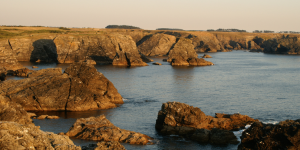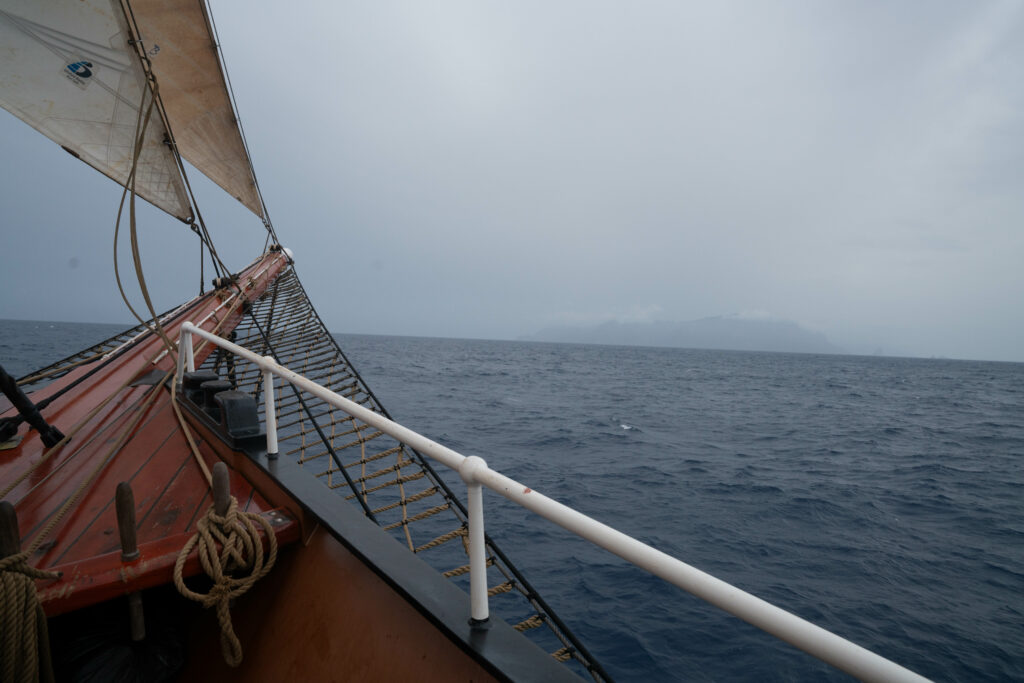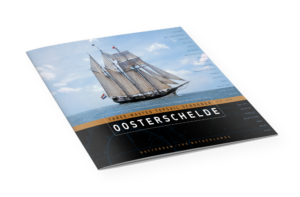22 Sep Unique weather system
22 September 2023
Unique weather system
Yesterday, our new group of guests came on board. They are sailing with us from Cape Verde, crossing the equator, to Fernando de Noronha (Brazil). The first night sleeping on the incredibly warm ship was not easy for most of them. Fortunately, experience teaches us that you do get used to that heat, but there were quite a few tired faces at breakfast.
We are traveling from north to south, right through a unique weather system. Around Cape Verde, the Northeast Trade Wind blows diagonally toward the equator. On the Southern hemisphere, we have the Southeast Trade Wind, which also blows diagonally toward the equator. In between, there is a zone of low pressure, the Intertropical Convergence Zone (ITCZ) (the Doldrums). The wind flows from both sides towards this area and becomes increasingly warmer and more humid. Where the air currents meet, the air rises. The rising air contains a lot of water vapor, which condenses at higher altitudes. Enormous clouds and showers form, often accompanied by thunder and lightning. The weather on this journey will, therefore, be very unstable but also impressive. “Weather” is created in this area. A small disruption in the airflow here can extract so much energy from the warm water that it can develop into a tropical depression or even a hurricane. By that time, they have usually moved much further west, but this is where they are “born.” The ITCZ does not lie on the equator but meanders around it a bit.
Depending on various factors, including the position of the sun, the entire zone can be located somewhat north or somewhat south. At the moment, it is situated very (unfortunately for us) far north. As a result, we can expect to lose the Northeast Trade Wind very quickly. For now, we don’t even have the Northeast Trade Wind; the wind is easterly and even becomes southeasterly under the influence of a disturbance to the south of us. We will see how it all develops.







